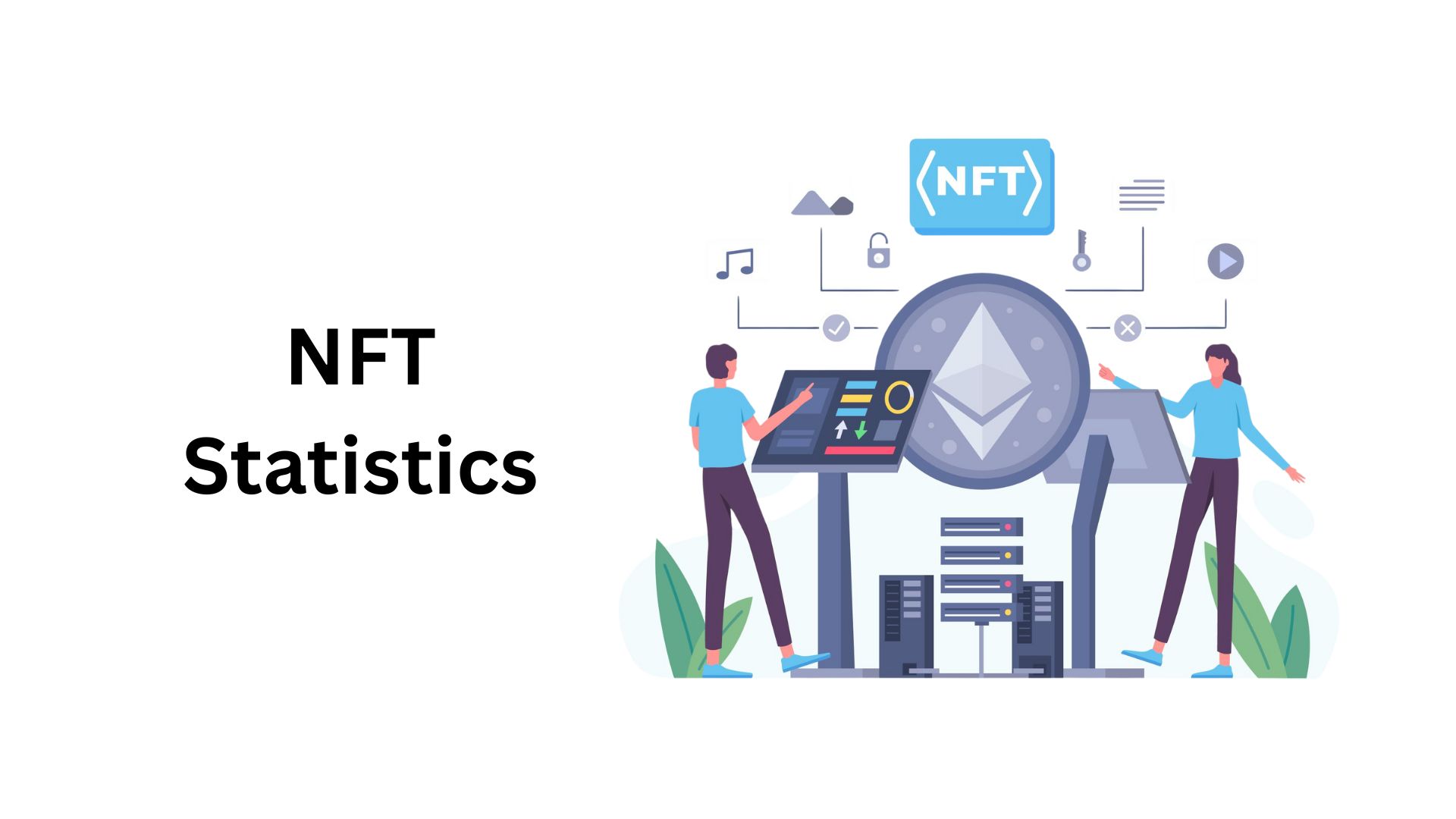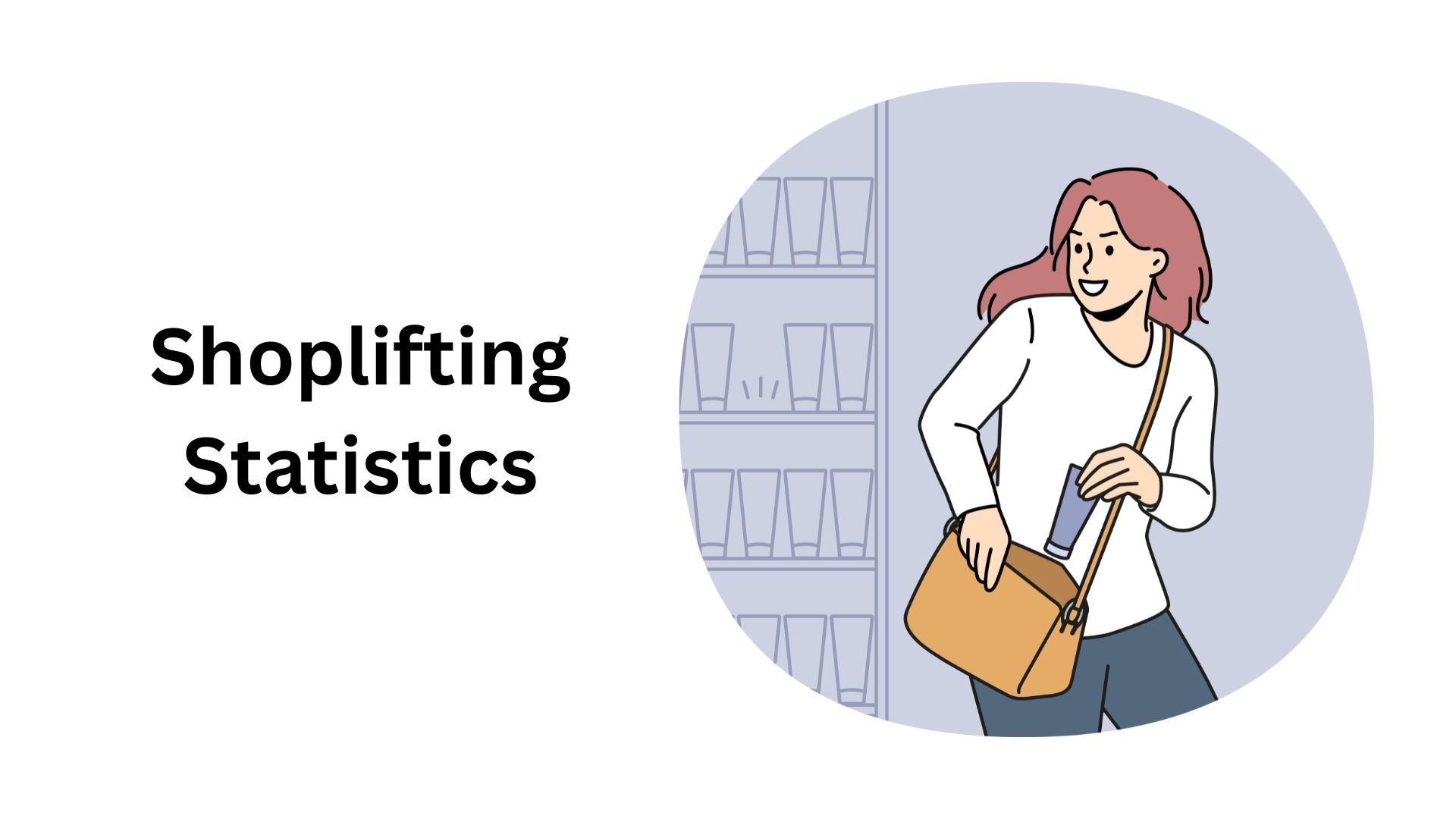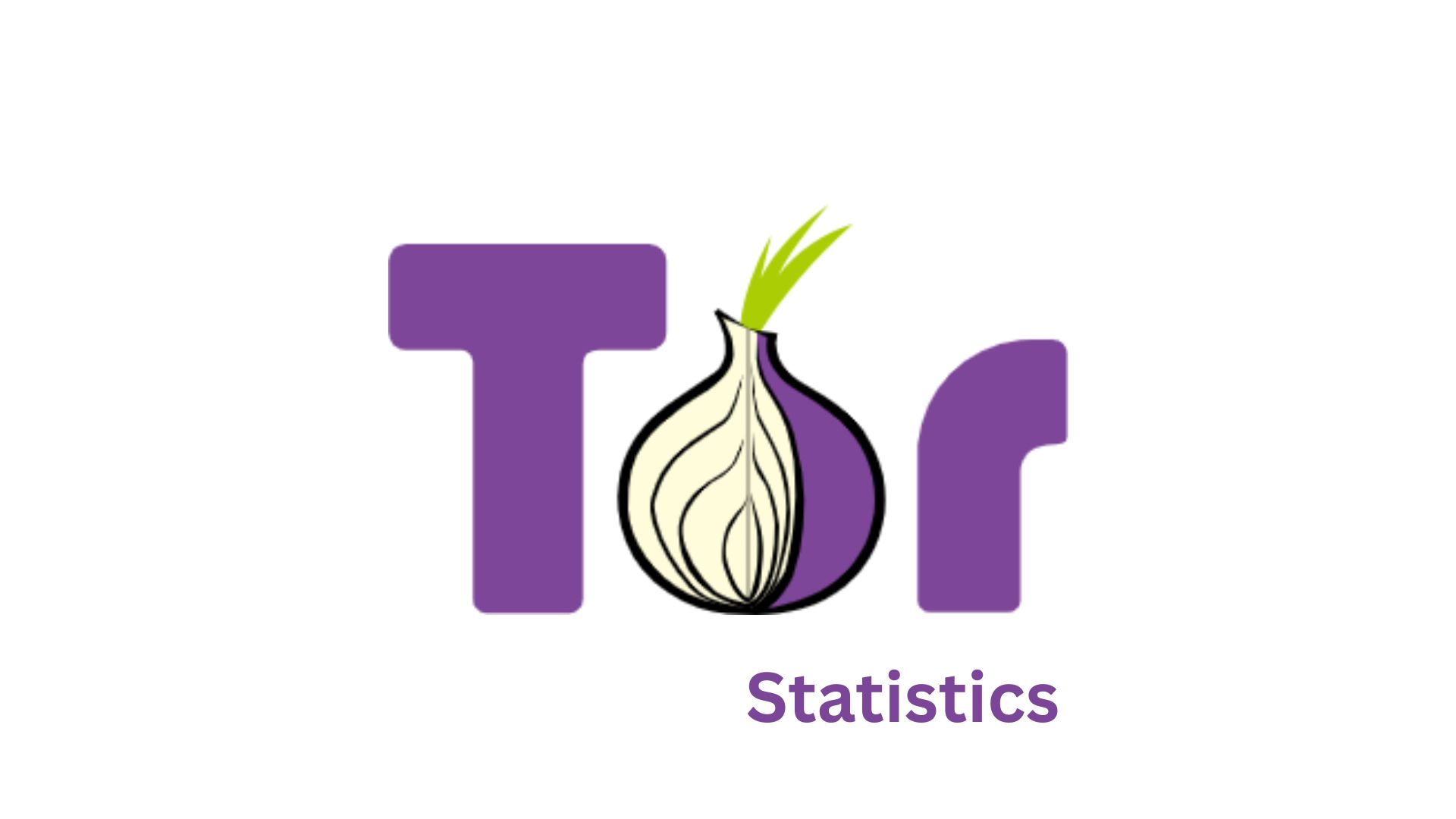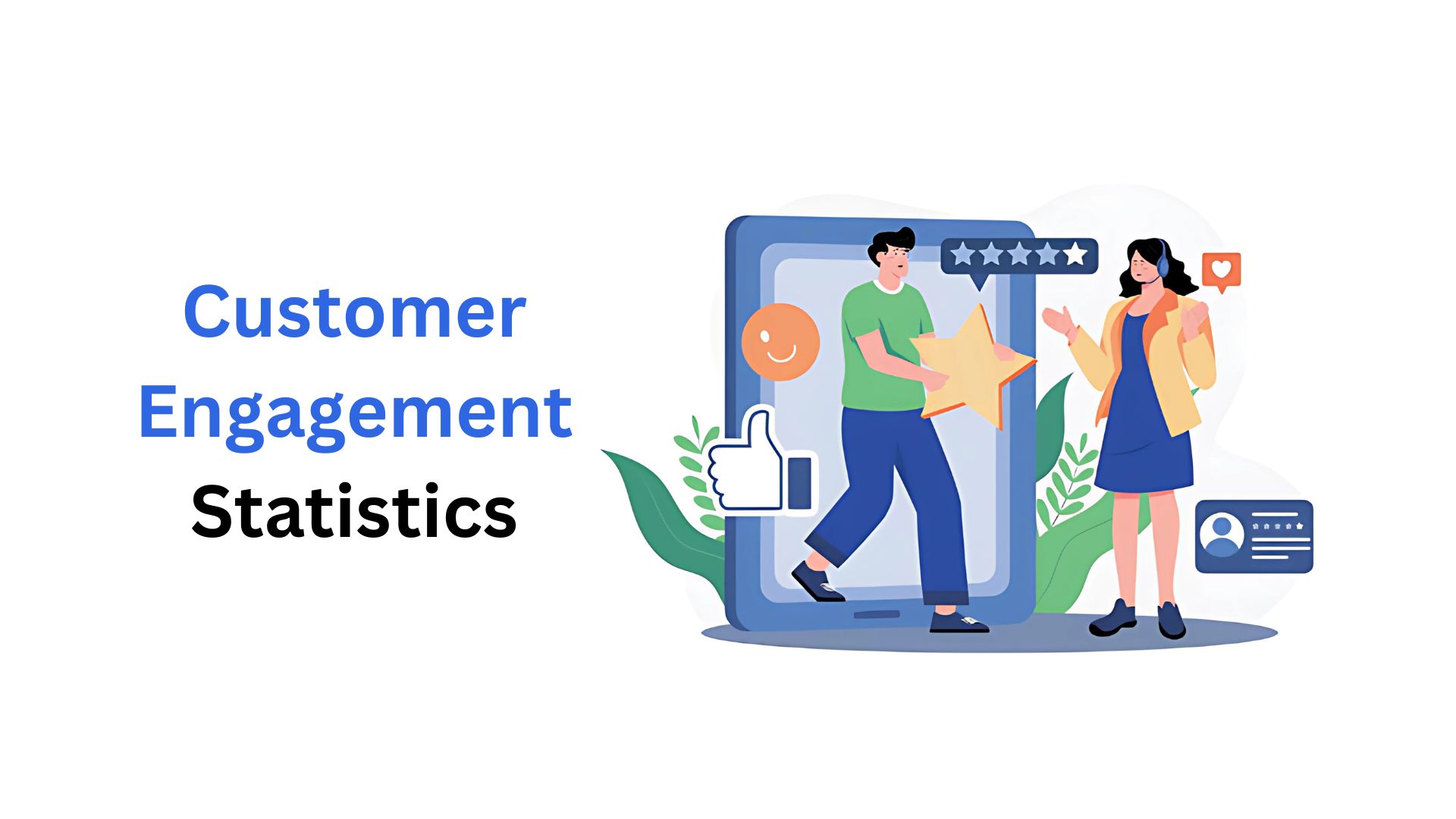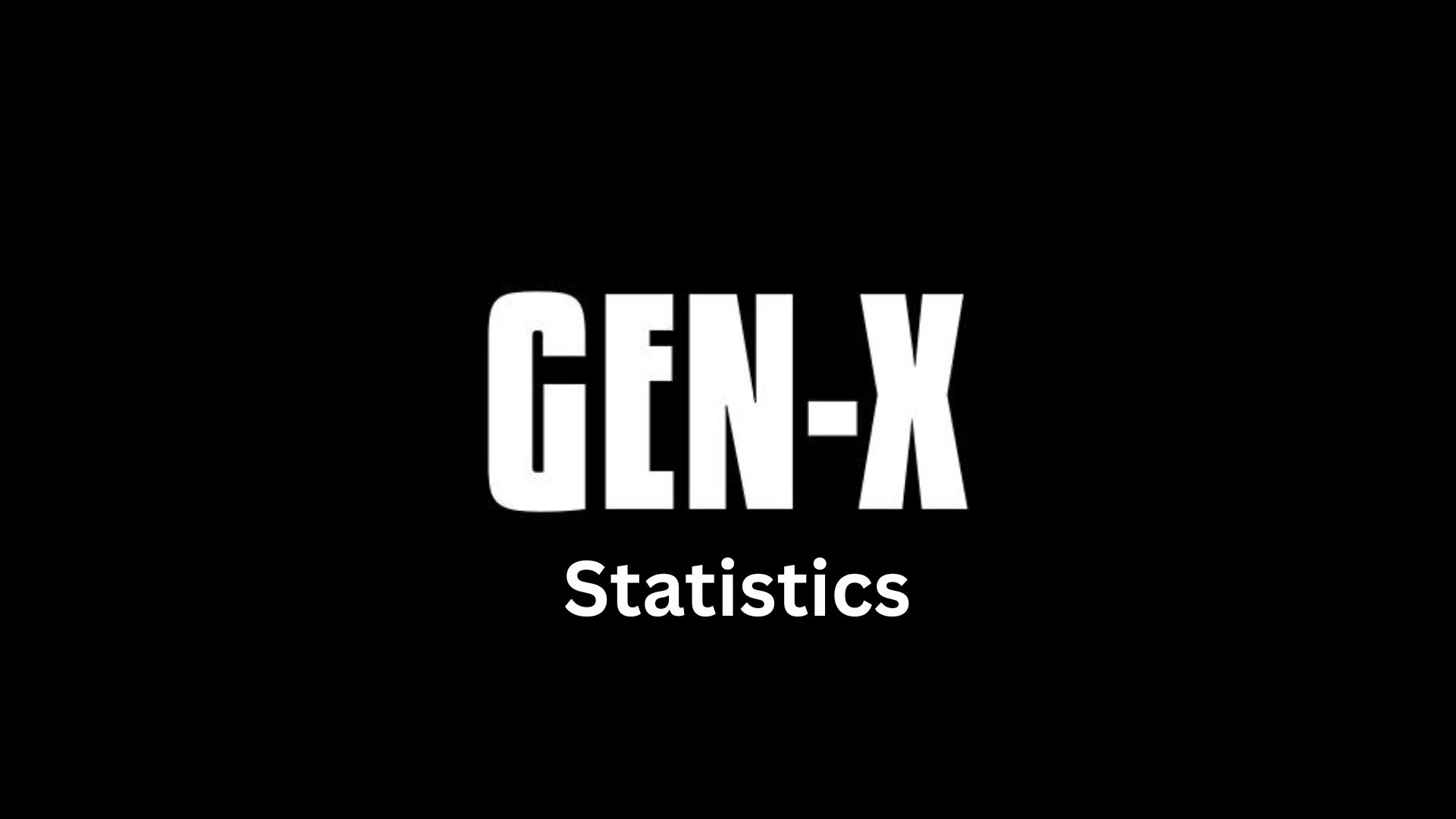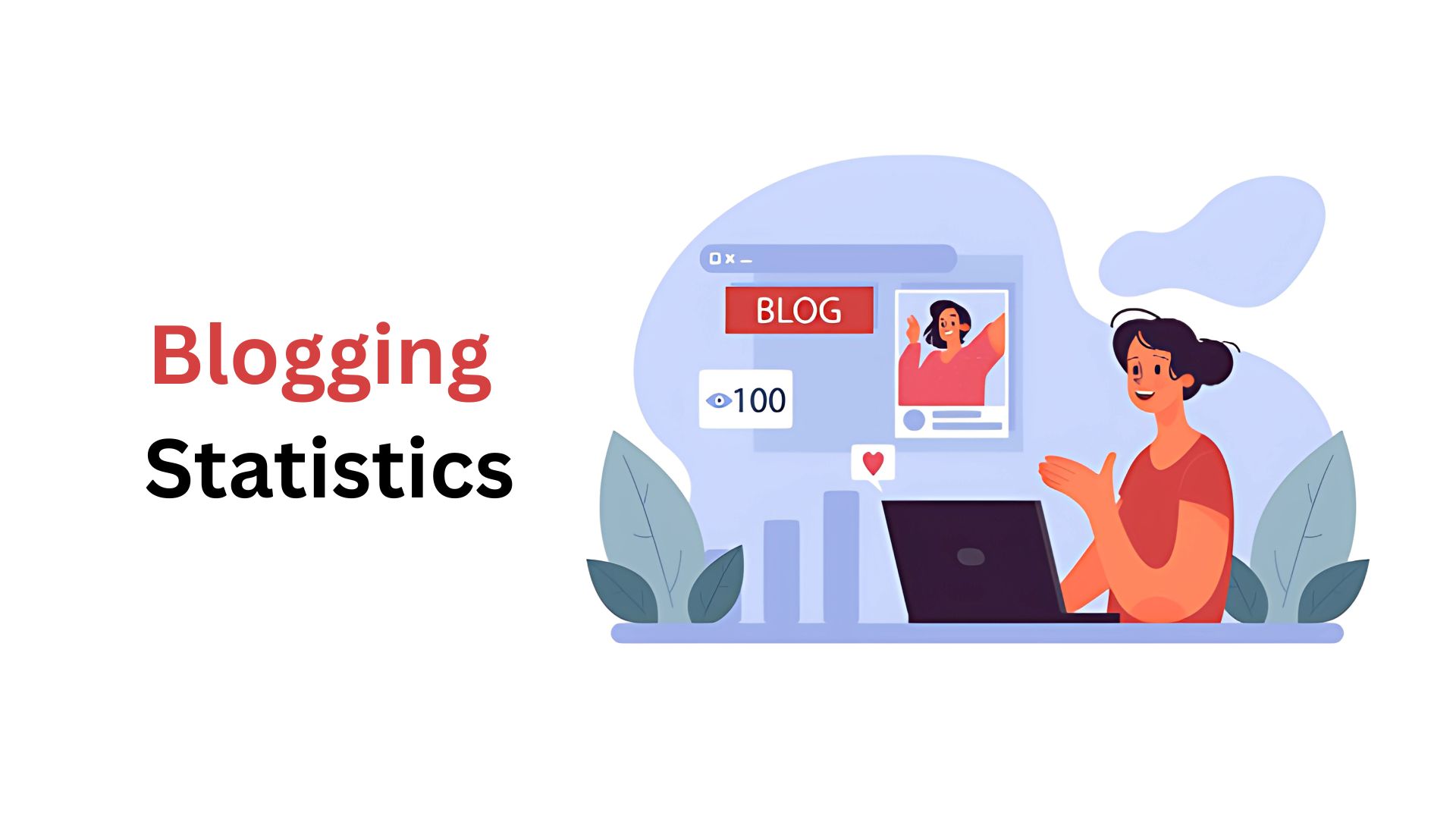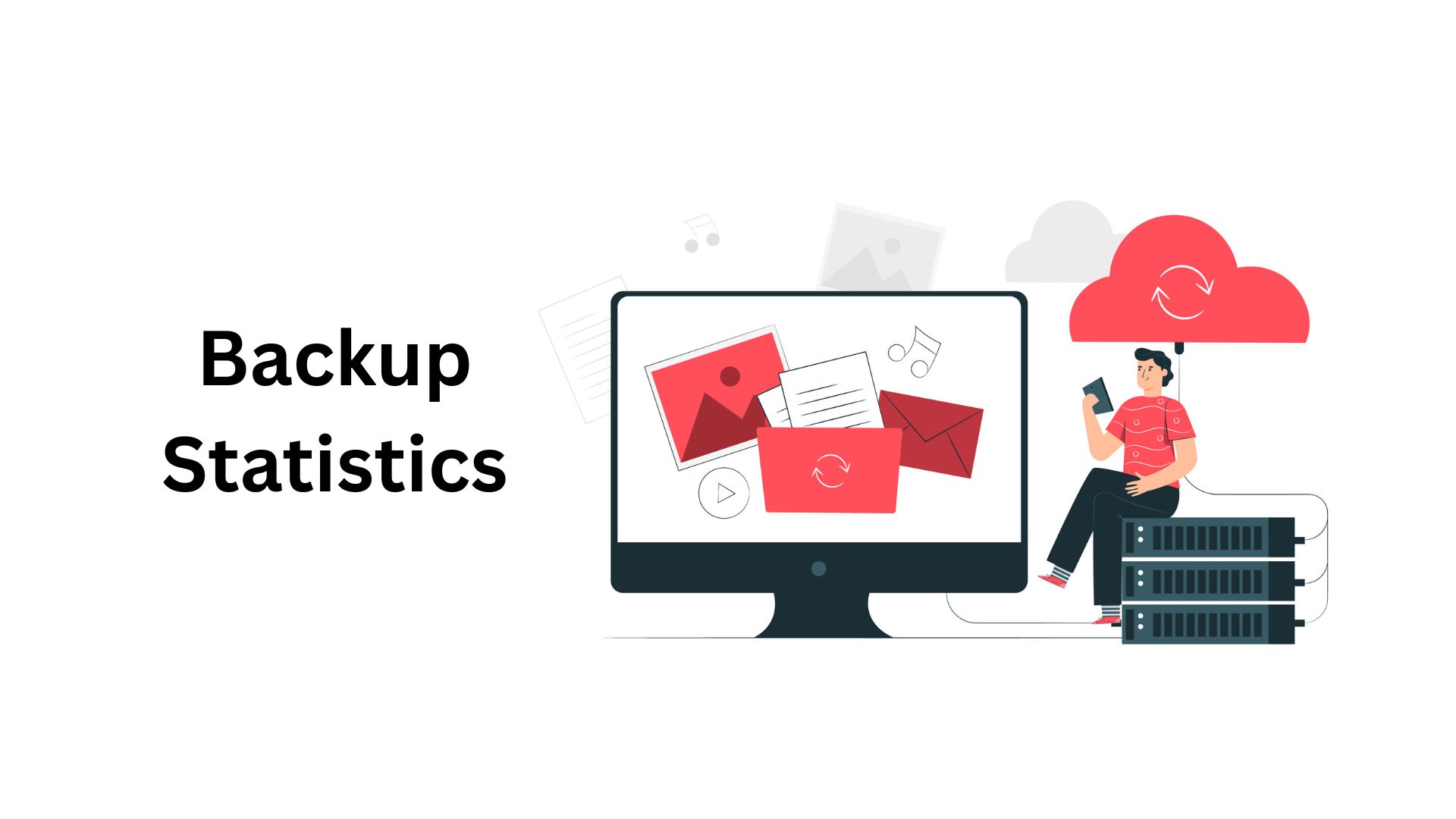Retargeting Statistics By Platform, Channels, B2B And B2C, Advertisement And Industry Future
Updated · Dec 19, 2024

Table of Contents
- Introduction
- Editor’s Choice
- Strategic Use of Retargeting
- Platform Used For Retargeting
- Channels Used For Retargeting
- Objective For Retargeting
- Most Helpful Customer Service Support
- Retargeting Technology For B2B
- Retargeting Technology For B2C
- Important Features For Retargeting Platforms
- Frequency For Evaluation of Retargeting Technology
- Key Performance Indicators For Retargeting Program
- Online Shopping Cart Abandonment Rate
- The Top Concern For Digital Advertising
- Top Remarketing Websites
- Customers Clicking Retargeted Advertisement
- Retargeting Effect on Linkedin
- Marketing Areas For Retargeting
- Retargeted Advertisement Effect on Customers
- Industries Using Retargeting Strategy
- Customer Concern About Retargeted Advertisements
- Retargeting Industry Future
- Conclusion
Introduction
Retargeting Statistics: Retargeting is a pivotal digital marketing strategy in an increasingly complex online advertising landscape. As businesses strive to reconnect with potential customers who have previously interacted with their brand, they must go through Retargeting Statistics to learn the measures for developing effective marketing campaigns.
From platform usage and marketing objectives to technological priorities for B2B and B2C companies, it is essential to gain a nuanced view of how organizations leverage retargeting to enhance their digital marketing efforts and improve customer engagement.
Editor’s Choice
- 77% of marketers use Facebook or Instagram as a primary retargeting strategy
- Social media is the most frequently used retargeting channel for 73% of enterprises
- 57% of businesses focus on brand awareness and sales through retargeting
- Email remains the most helpful customer service support channel at 57%
- B2B companies prioritize associated costs in retargeting technology (41%)
- B2C companies value audience access in retargeting (49%)
- 56% of companies evaluate retargeting technology monthly
- ROI is the primary KPI for 54% of marketers
- Online shopping cart abandonment rate reached 70.19% in 2024
- Reaching target audiences effectively is a concern for 53% of companies
- Google Remarketing has 127,115 remarketing websites
- 48% of B2C companies consider ease of use in retargeting
- Customer retention is a primary retargeting objective for 55% of respondents
- 47% of enterprises use mobile as a retargeting channel
- Click-through rate is a key performance indicator for 35% of marketers
Strategic Use of Retargeting
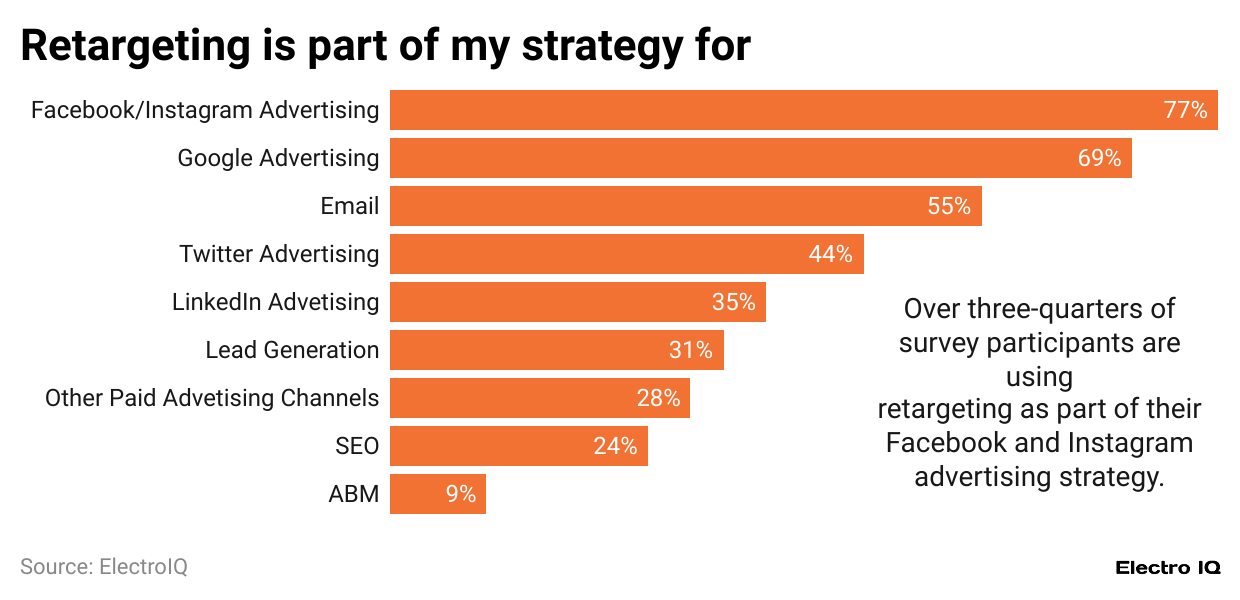
(Reference: amazonaws.com)
- Facebook or Instagram is employed as the primary retargeting strategy by 77% of respondents.
- Google Advertising is utilized by 69% of respondents for retargeting purposes.
- Email is chosen as a major retargeting strategy by 55% of respondents.
- Twitter Advertising is used by 44% of respondents for retargeting.
- LinkedIn Advertising serves as the main retargeting channel for 35% of respondents.
- Lead Generation strategies are adopted by 31% of respondents for retargeting.
Platform Used For Retargeting

(Reference: amazonaws.com)
- Retargeting Statistics show that Google ads and Facebook are the most prominent sources of retargeting for 77% of the respondents.
- LinkedIn is a platform used for retargeting, as per 36% of the respondents.
Channels Used For Retargeting
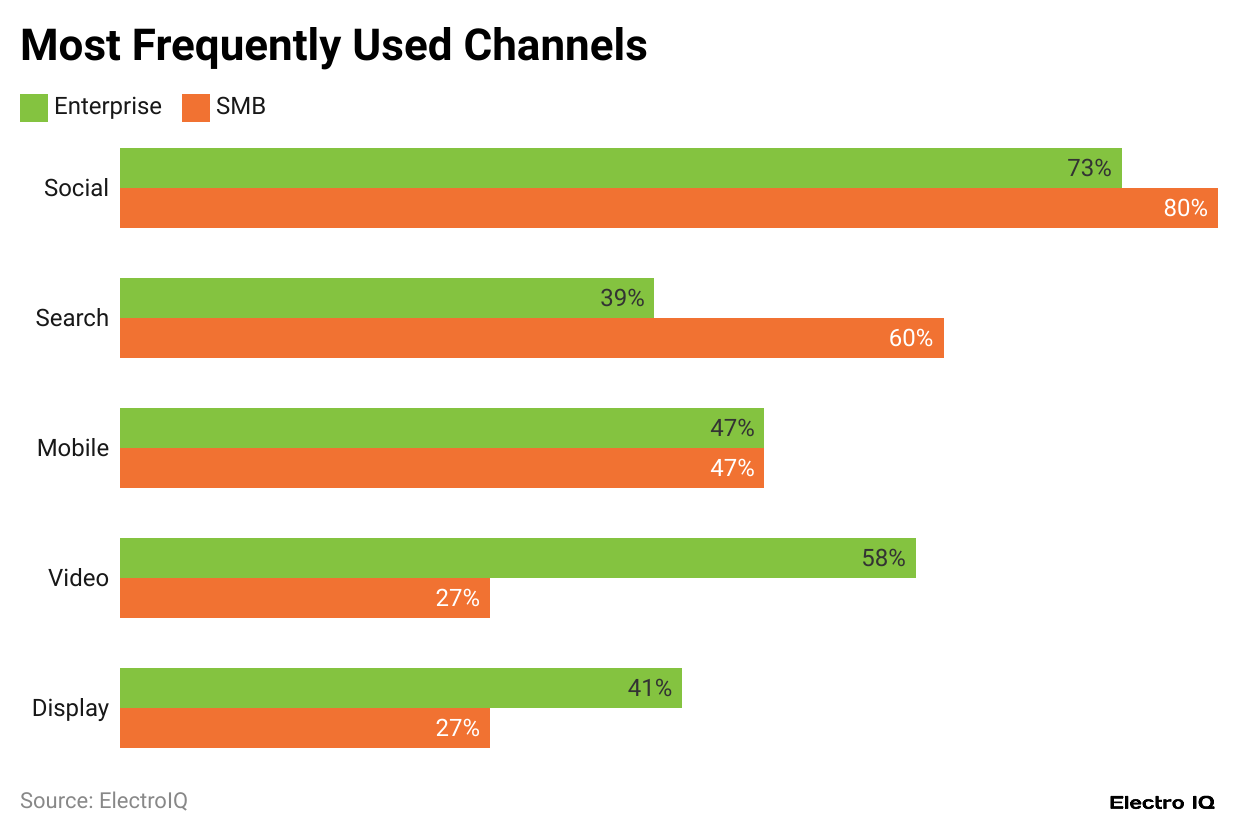
(Reference: amazonaws.com)
- Social media is the primary retargeting channel for 73% of enterprises and 80% of small businesses.
- Video serves as the top retargeting channel for 58% of enterprises and 27% of small businesses.
- Mobile is utilized as the main retargeting channel by 47% of both enterprises and small businesses.
- Display advertising is the most frequent retargeting channel for 41% of enterprises and 27% of small businesses.
- Search engines are the preferred retargeting channel for 39% of enterprises and 60% of small businesses.
Objective For Retargeting
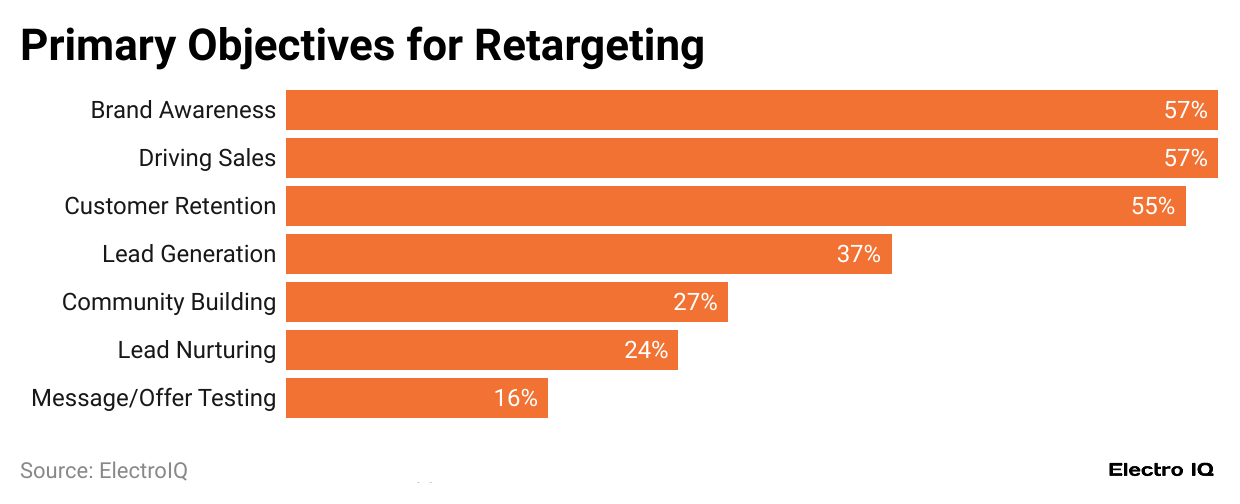
(Reference: amazonaws.com)
- 57% of respondents identify brand awareness and driving sales as the primary objectives of retargeting.
- 55% of respondents highlight customer retention as a key goal for retargeting.
- 37% view lead generation as a primary objective of retargeting efforts.
- 27% focus on community building as a central objective of retargeting.
- 24% consider lead nurturing to be an important retargeting goal.
- 16% use retargeting for message/offer testing.
Most Helpful Customer Service Support

(Reference: amazonaws.com)
- Retargeting Statistics show that email is the most helpful form of customer service support for retargeting for 57% of respondents.
- Live chat is the most helpful form of customer service support for 51% of respondents.
- Phone calls are the most helpful form of customer service support for 48% of respondents.
Retargeting Technology For B2B

(Reference: amazonaws.com)
- Retargeting Statistics show that 41% of respondents say that B2B companies prioritize associated costs when using retargeting technology.
- The ability to customize is a priority for B2B companies, as per 32% of respondents.
Retargeting Technology For B2C

(Reference: amazonaws.com)
- Access to desired audiences is considered the most prominent retargeting technology by 49% of respondents from B2C companies.
- Ease of use is highlighted as a key retargeting technology by 48% of respondents in B2C settings.
- Customer service is valued as an important retargeting technology by 42% of B2C company respondents.
Important Features For Retargeting Platforms
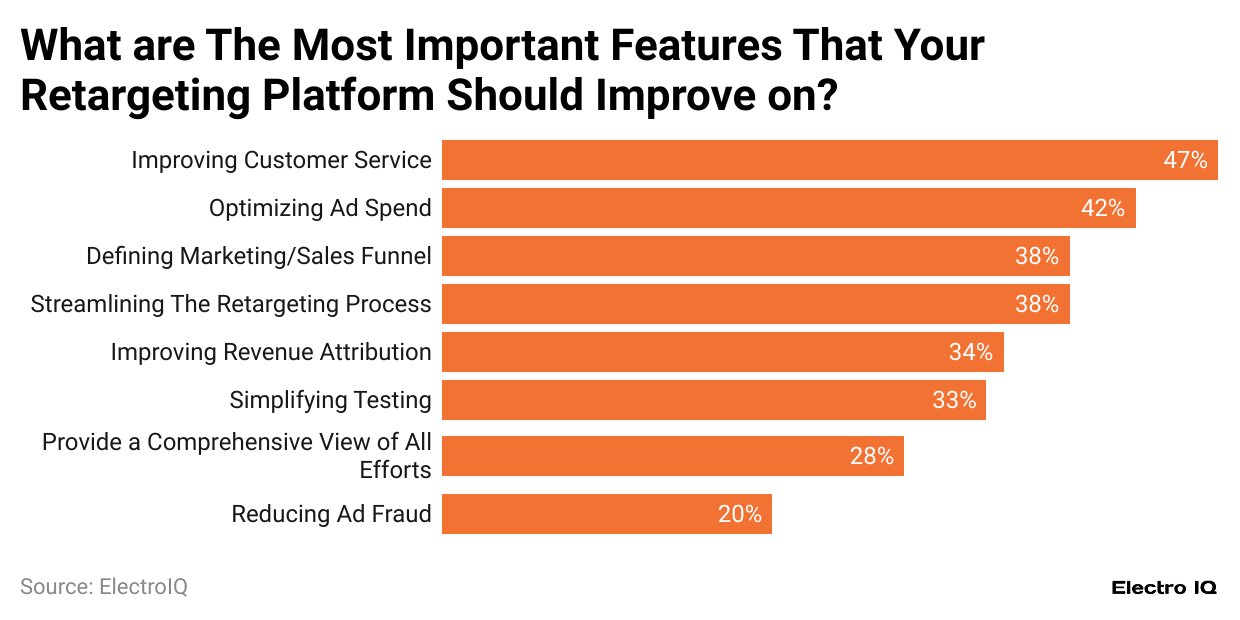
(Reference: amazonaws.com)
- Improving customer service is identified by 47% of respondents as a key feature for enhancement in retargeting platforms.
- Optimizing ad spend is a priority for 42% of respondents.
- Defining the marketing/sales funnel and streamlining the retargeting process are both important features for 38% of respondents.
- Improving revenue attribution is highlighted by 34% of respondents as a necessary improvement.
- Simplifying testing is considered important by 33% of respondents.
- Providing a comprehensive view of all efforts is essential for 28% of respondents.
- Reducing ad fraud is a significant concern for 20% of respondents.
Frequency For Evaluation of Retargeting Technology
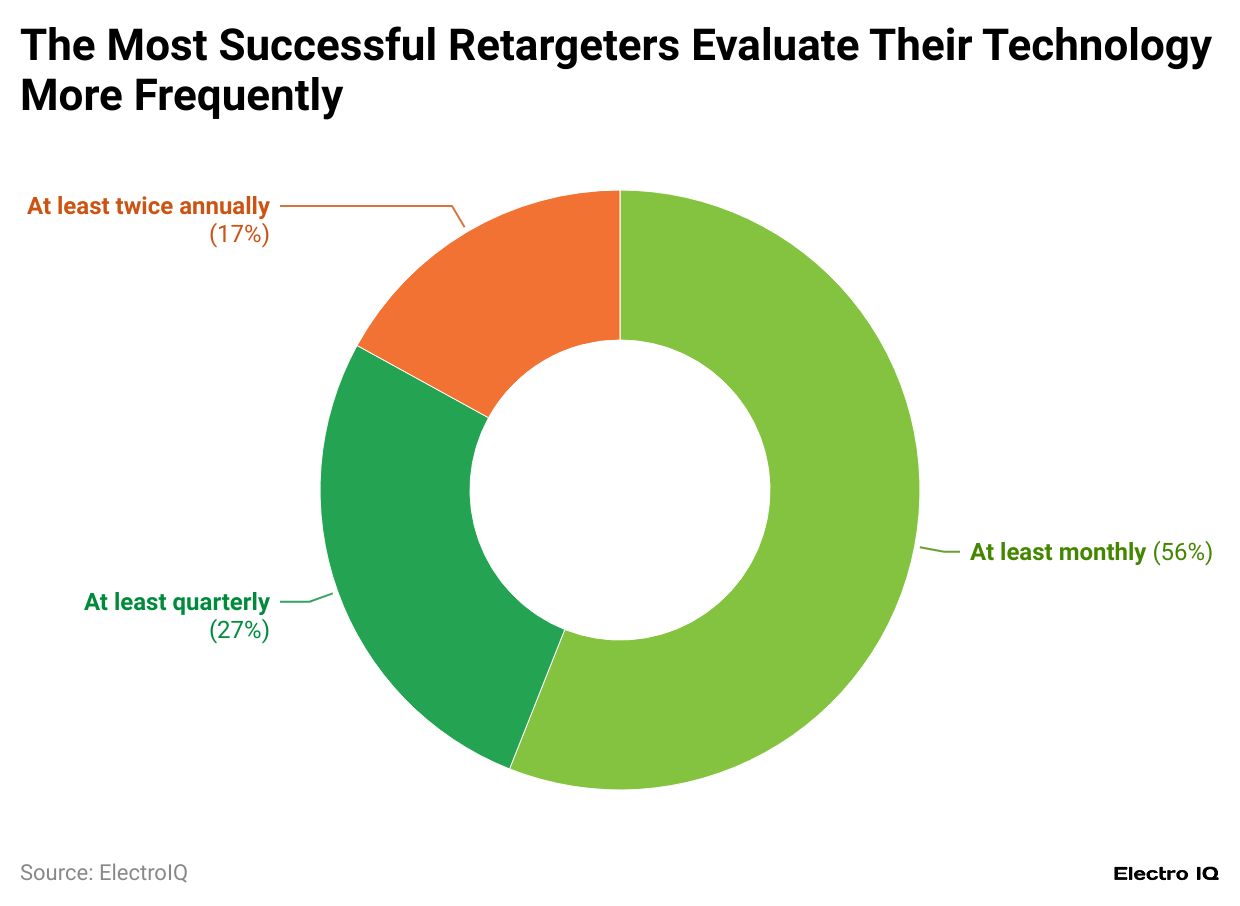
(Reference: amazonaws.com)
- Retargeting Statistics show that for 56% of companies, retargeting technology is evaluated at least monthly.
- For 27% of companies, retargeting technology is evaluated at least quarterly.
- For 17% of companies, retargeting technology is evaluated at least twice annually.
Key Performance Indicators For Retargeting Program
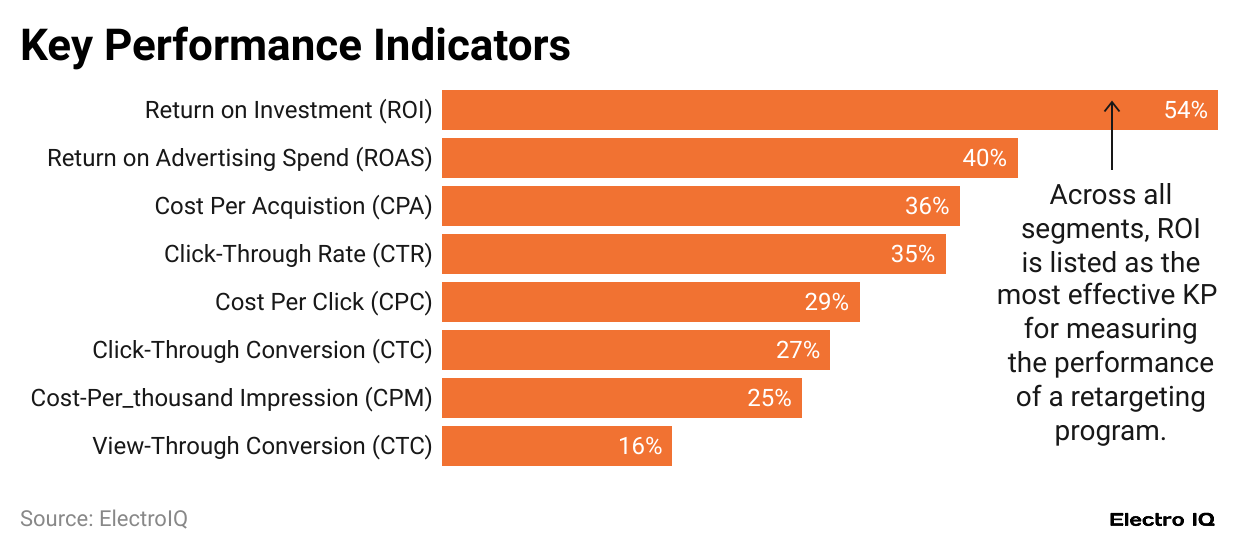
(Reference: amazonaws.com)
- 54% of respondents identify return on investment (ROI) as the key performance indicator for retargeting programs.
- 40% of respondents consider return on advertising spend (ROAS) as the primary metric for evaluating retargeting effectiveness.
- 36% of respondents highlight cost per acquisition (CPA) as a crucial performance indicator for retargeting.
- 35% of respondents use click-through rate (CTR) to measure the success of retargeting efforts.
- 29% of respondents prioritize cost per click (CPC) as a key performance indicator in retargeting strategies.
- 27% of respondents view click-through conversion (CTC) as an important metric for retargeting campaigns.
Online Shopping Cart Abandonment Rate
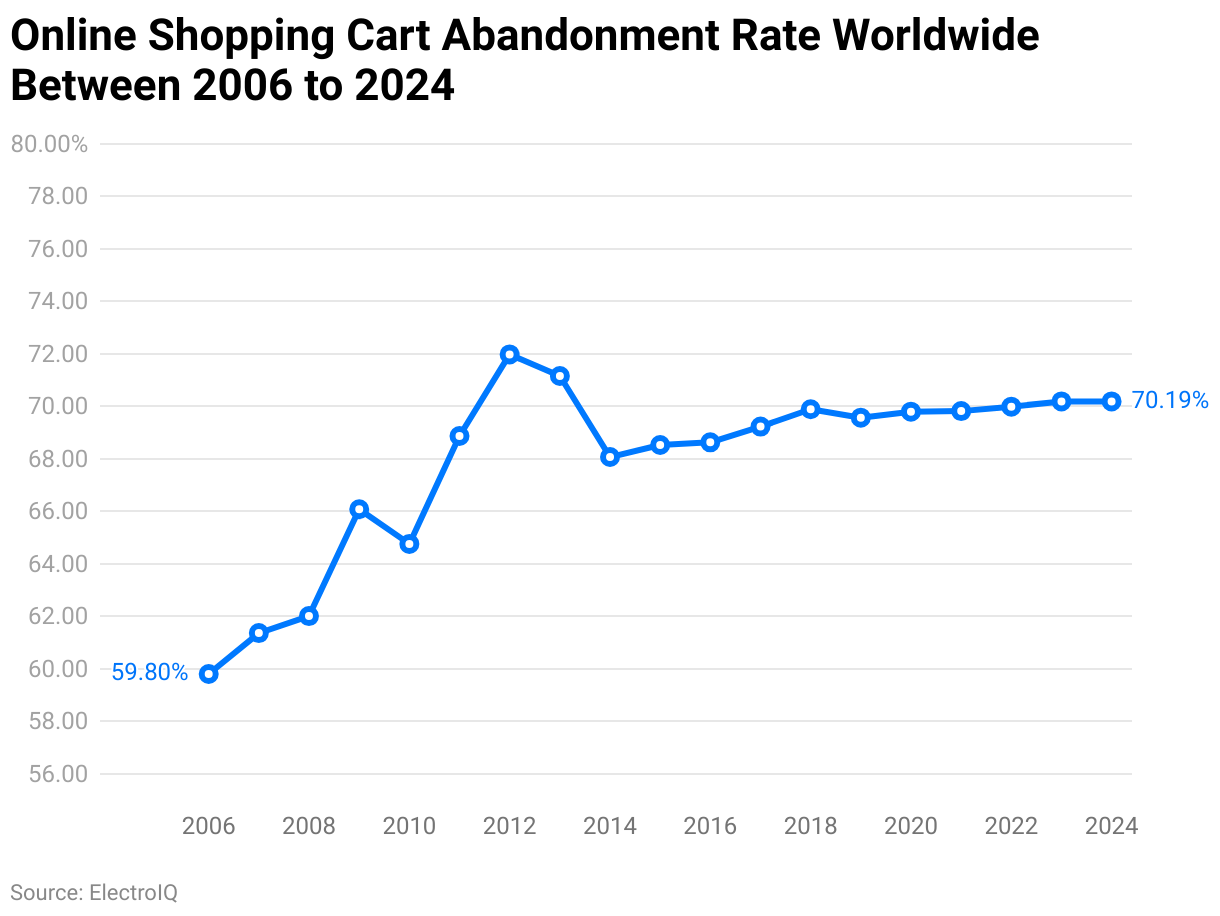
(Reference: statista.com)
- Retargeting Statistics show that the online shopping cart abandonment rate has steadily increased.
- In 2006, the abandonment rate of online shopping carts was 59.8%.
- As of 2024, the online shopping cart abandonment rate is 70.19%.
- Between 2006 and 2024, the abandonment rate of online shopping carts was highest in 2012 at 71.98%.
The Top Concern For Digital Advertising
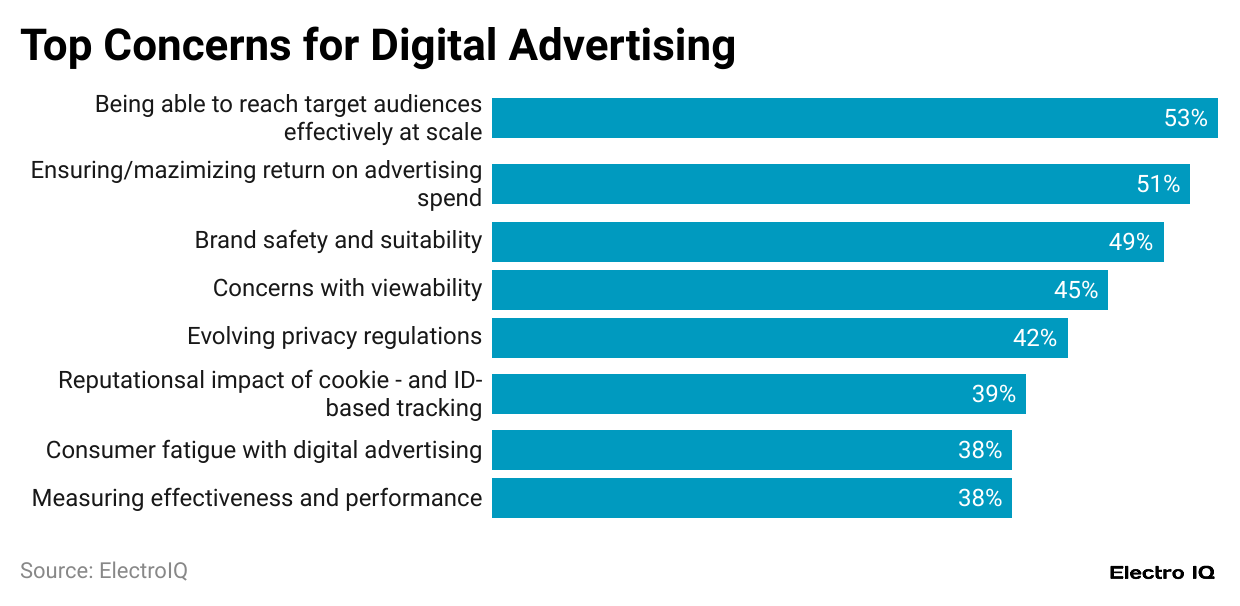
(Reference: marketingcharts.com)
- Retargeting Statistics show that for 53% of companies, being able to reach target audiences effectively is a primary concern.
- For 51% of companies, maximizing return on advertising spend is a key concern.
- For 49% of companies, brand safety and suitability is a significant concern.
- For 45% of companies, addressing viewability issues is a major concern.
- For 42% of companies, evolving privacy regulations pose a primary challenge.
Top Remarketing Websites
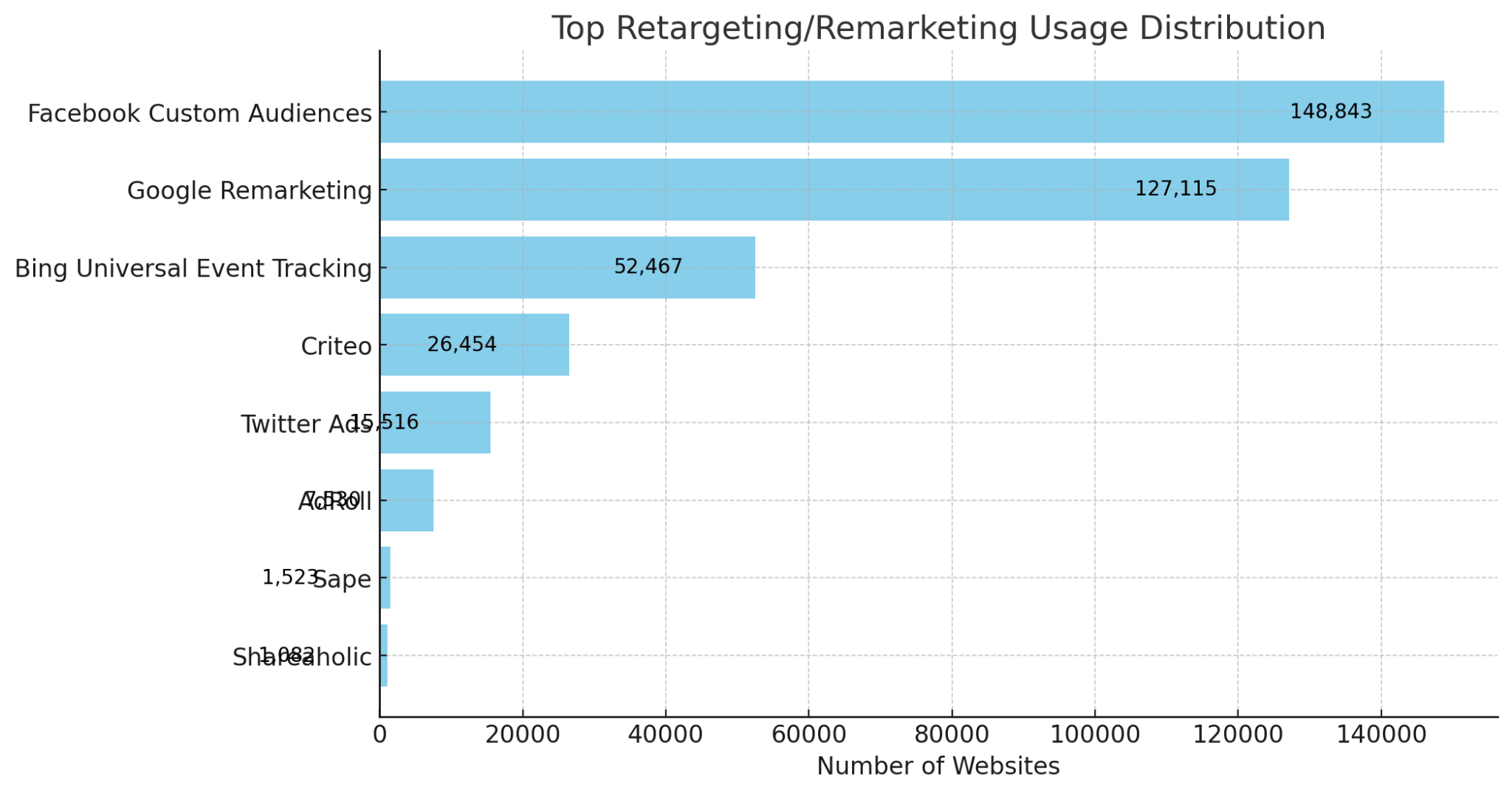
(Source:trends.builtwith.com)
- Retargeting Statistics show that Facebook’s custom audiences have the highest number of remarketing websites, with 148843.
- Google Remarketing has the 2nd highest number of remarketing websites, with 127,115.
- Bing Universal Event Tracking has the 3rd highest number of remarketing websites, with 52,467.
- Criteo has the 4th highest number of remarketing websites, with 26,454.
- Twitter Ads has the 5th highest number of remarketing websites, with 15,516.
Customers Clicking Retargeted Advertisement
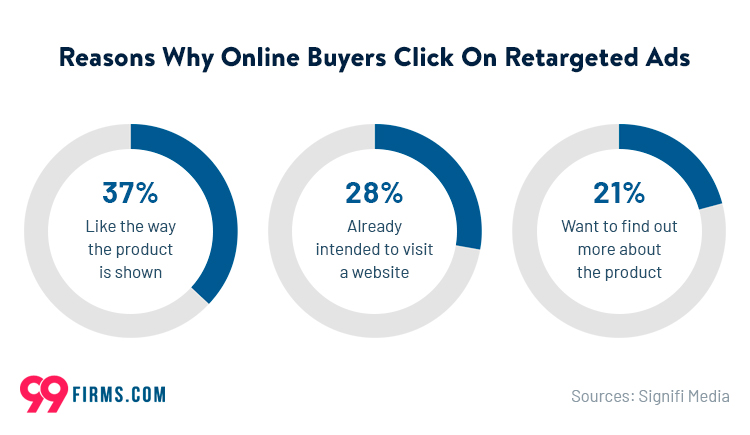
(Source: 99firms.com)
- Retargeting Statistics show that for 37% of respondents, customers click on retargeted ads as they like how the product is displayed.
- 28% of respondents clicked on retargeted ads as they intended to visit the website.
- 21% of respondents click on retargeted ads because they want to learn more about the product.
Retargeting Effect on Linkedin
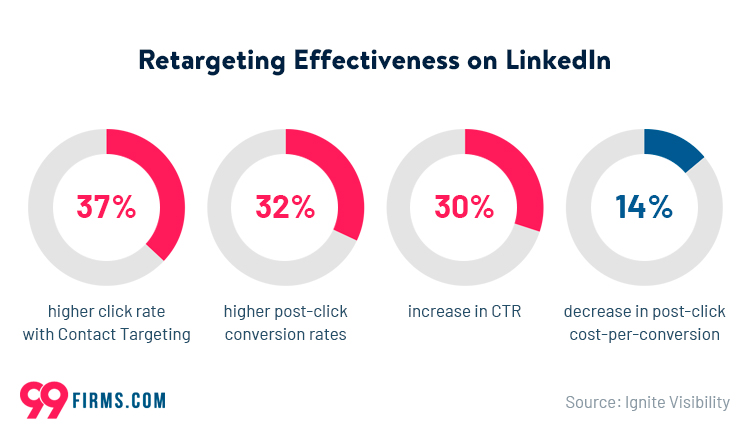
(Source: 99firms.com)
- Retargeting Statistics show that a higher click rate with contract targeting is the most effective retargeting strategy for LinkedIn users, as 37% of respondents stated.
- 32% of LinkedIn users find a higher post-click conversion rate effective.
- 30% of LinkedIn users find an increase in CTR (Click-Through Rate) impactful.
- 14% of LinkedIn users find a decrease in post-click cost-per-conversion to be beneficial
Marketing Areas For Retargeting
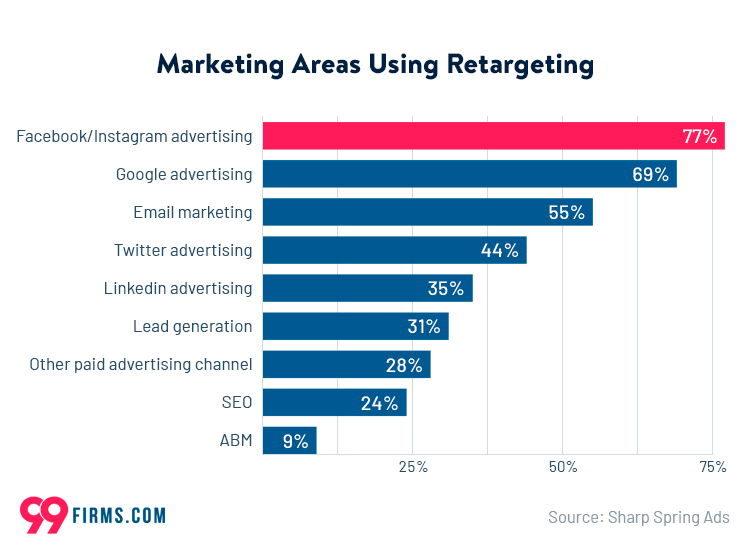
(Source: 99firms.com)
- Retargeting Statistics show that 77% of respondents consider Facebook/ Instagram advertising the most prominent marketing area for retargeting.
- Google advertising is the 2nd most prominent, with 69% of respondents.
- Email marketing is the 3rd most prominent, used by 55% for retargeting.
- Twitter advertising is the 4th most prominent, accounting for 44%.
- LinkedIn advertising is the 5th most prominent, used by 35%.
Retargeted Advertisement Effect on Customers
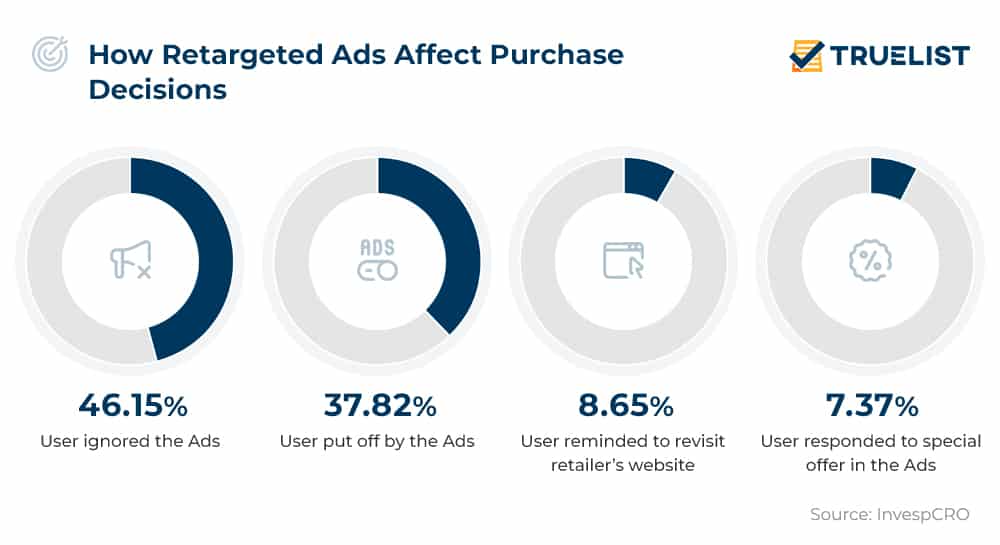
(Source: truelist.co)
- Retargeting Statistics show that 46.15% of respondents ignored retargeted advertisements.
- The ads put off 37.82% of users.
- 65% of users were reminded to revisit the retailer’s website.
- 37% of users responded to a special offer in the ads.
Industries Using Retargeting Strategy
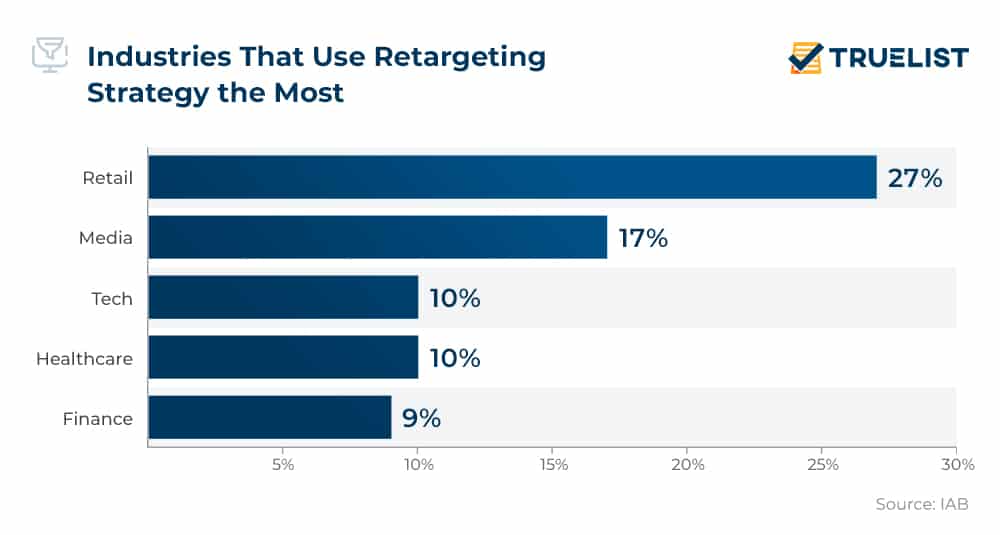
(Source: truelist.co)
- Retargeting Statistics show that 27% of companies in the retail industry use a retargeting strategy.
- 17% of companies in the media industry use a retargeting strategy.
- 10% of companies in the tech and healthcare industries use a retargeting strategy.
- 9% of companies in the finance industry use a retargeting strategy.
Customer Concern About Retargeted Advertisements
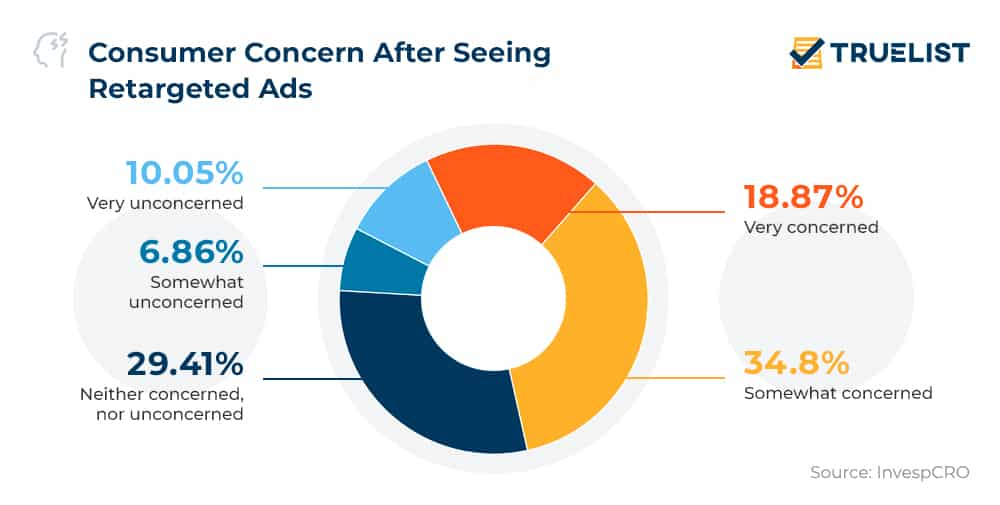
(Source: truelist.co)
- Retargeting Statistics show that 34.8% of customers are concerned about retargeted advertisements.
- 41% of customers are neither concerned nor unconcerned about retargeted advertisements.
- 87% of customers are very worried about retargeted advertisements.
- 05% of customers need more clarification about retargeted advertisements.
- 86% of customers need more clarification about retargeted advertisements.
Retargeting Industry Future
- The global retargeting software market was valued at $1.9 billion in 2022 and is expected to grow at a CAGR of 15.23% during the forecast period (2023–2030).
- Technological advancements, such as AI and machine learning, are driving the growth. They enable businesses to target their ads accurately and place them more effectively.
- Solutions dominate the market offerings segment, as small and medium-sized enterprises especially adopt pre-built templates and automation tools.
- The cloud-based deployment segment holds a significant share due to its scalability, cost-effectiveness, and automatic updates, making adoption easier for businesses.
- Retail remains the largest application segment due to its reliance on retargeting strategies for customer acquisition and revenue growth.
- North America leads the market, driven by the region’s focus on data-driven marketing solutions and increasing investments in retargeting campaigns.
- Businesses using retargeting strategies effectively can achieve up to 5x return on investment (ROI).
- Google, Facebook, AdRoll, OpenX, Criteo, Instagram, Twitter, Outbrain, and NowSpots, Inc. are key players in the retargeting software market.
- The growing competition in digital marketing and increased focus on customer engagement fuel the demand for advanced retargeting software
(Source: univdatos.com)
Conclusion
Retargeting has evolved into a sophisticated digital marketing approach that enables businesses to re-engage potential customers with precision and strategic intent. The landscape is characterized by dynamic platform preferences, with social media and search advertising dominating the retargeting strategies. Retargeting Statistics show marketers increasingly prioritize data-driven decision-making, focusing on key performance indicators like ROI and customer retention.
The future of retargeting lies in intelligent, adaptive strategies that prioritize user experience, leverage multi-channel platforms, and provide measurable, impactful results. Hence, businesses can develop more effective, targeted marketing campaigns that resonate with their audience and drive meaningful engagement.
Sources
FAQ.
Retargeting is a digital marketing strategy that targets users who have previously interacted with a brand’s website or content.
Facebook, Instagram, and Google Ads are the most prominent retargeting platforms.
The top objectives are brand awareness, driving sales, and customer retention.
56% of companies evaluate retargeting technology monthly.
ROI, return on advertising spend, cost per acquisition, and click-through rate are primary KPIs.
The abandonment rate increased from 59.8% in 2006 to 70.19% in 2024.
Associated costs and customisation are top priorities.
Audience access, ease of use, and customer service are most important.
Reaching target audiences, maximising advertising spend, and brand safety.
Facebook Custom Audiences leads with 148,843 remarketing websites.

Maitrayee Dey has a background in Electrical Engineering and has worked in various technical roles before transitioning to writing. Specializing in technology and Artificial Intelligence, she has served as an Academic Research Analyst and Freelance Writer, particularly focusing on education and healthcare in Australia. Maitrayee's lifelong passions for writing and painting led her to pursue a full-time writing career. She is also the creator of a cooking YouTube channel, where she shares her culinary adventures. At Smartphone Thoughts, Maitrayee brings her expertise in technology to provide in-depth smartphone reviews and app-related statistics, making complex topics easy to understand for all readers.


